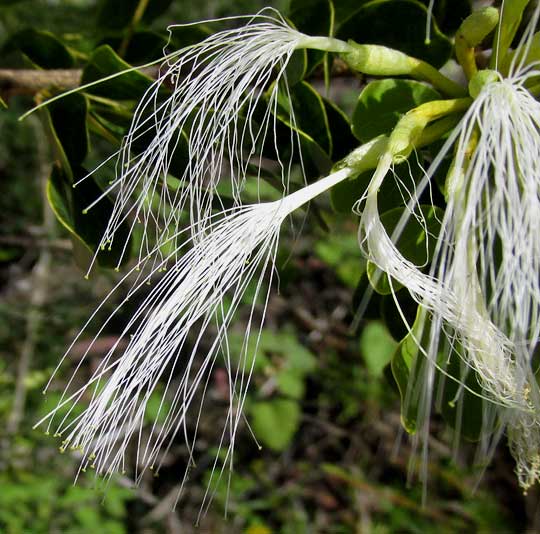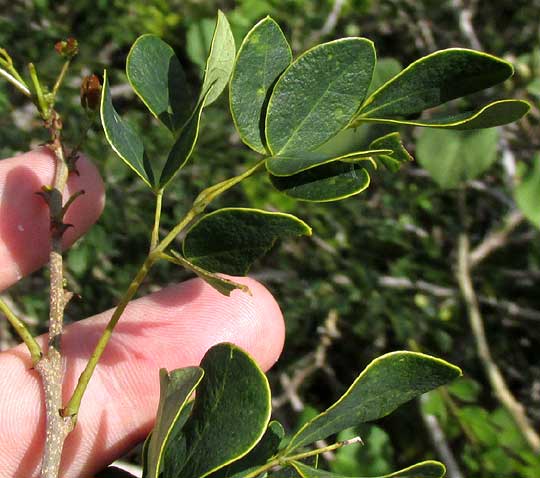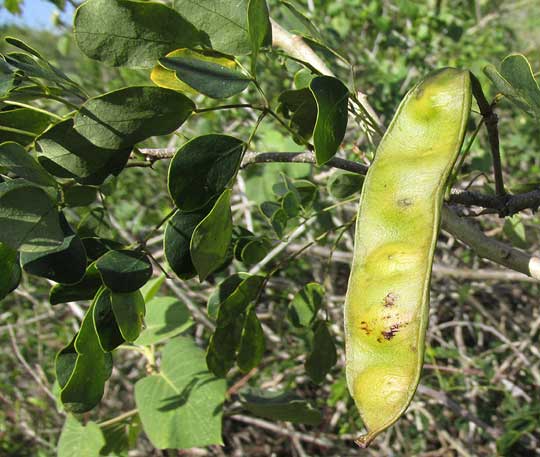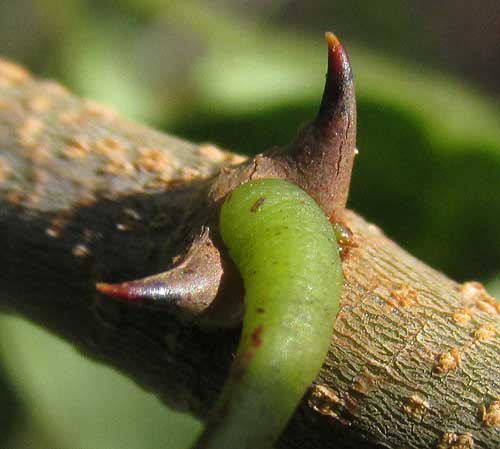Excerpts from Jim Conrad's
Naturalist Newsletter
from the February 22, 2015 Newsletter issued from Río Lagartos, on the Yucatan Peninsula's northern coast (~N21.60°, ~W88.16°), Yucatán state, MÉXICO
SPHINGA TREE
Nowadays fairly commonly flowering along the coastal road between Río Lagartos and San Felipe is a smallish tree with clusters of brilliantly white flowers issuing many slender stamens in shaving-brush fashion, as seen below:

The flowers' stamens droop soon after sunrise, so the flower clusters' esthetic impact is mainly at dawn, suggesting -- along with the pure white color -- that the blossoms depend on nocturnal moths and/or bats for pollination. A close-up below shows some still-perky flowers, and how the stamens' long filaments unite at their bases into cylinders surrounding the bases of very long, slender styles:

This tree's leaves are twice pinnately compound. Most twice pinnately compound leaves consist of many small leaflets but this tree's leaves have just a few larger ones, as seen below:

Fortunately -- because I'd not encountered this combination of features before, so it was something new for me -- a few flat-podded, legume-type fruits are being produced, helping with the identification process, as shown below:

Recognizing the fruit as a legume, which is the fruit-type produced by the huge Bean Family, plus the fact that the doubly compound leaves are like those of many Bean Family trees, as well as that the flowers are similar to those of acacias, which are members of the Bean Family, it was clear that our mysterious tree with its brilliantly white, shaving-brush flowers was a member of the Bean Family. Another feature worth documenting was the way pairs of broad-based, curved-back, blood-drawing spines occurred at the bases of many leaf petioles, as seen below:

All these field marks lead us directly to a Bean Family genus I'd never heard of, the genus Sphinga. Sphinga embraces only three species, of which two occur in the Yucatan, the third in Cuba. Our species is SPHINGA PLATYLOBA, found from central Mexico south through Central America into northern South America. The English-speaking world has ignored the species, so there's no decent English name. In fact I can't find a good Spanish name, either. The Maya call it Muk or Nuk, since they don't much distinguish between Ms and Ns at the beginning of words. Therefore, we'll just call it Sphinga.
For a long time, Sphinga trees have been troublesome to taxonomists. During recent years Sphinga species have resided in the genera Acacia, Pithecellobium, Havardia and Feuilleea, and who knows where they'll be ten years from now? It surprises some that in these days there could be a perfectly good tree commonly encountered from central Mexico to Venezuela, for which somehow no common or technical name convincingly exists, but that's the case here.